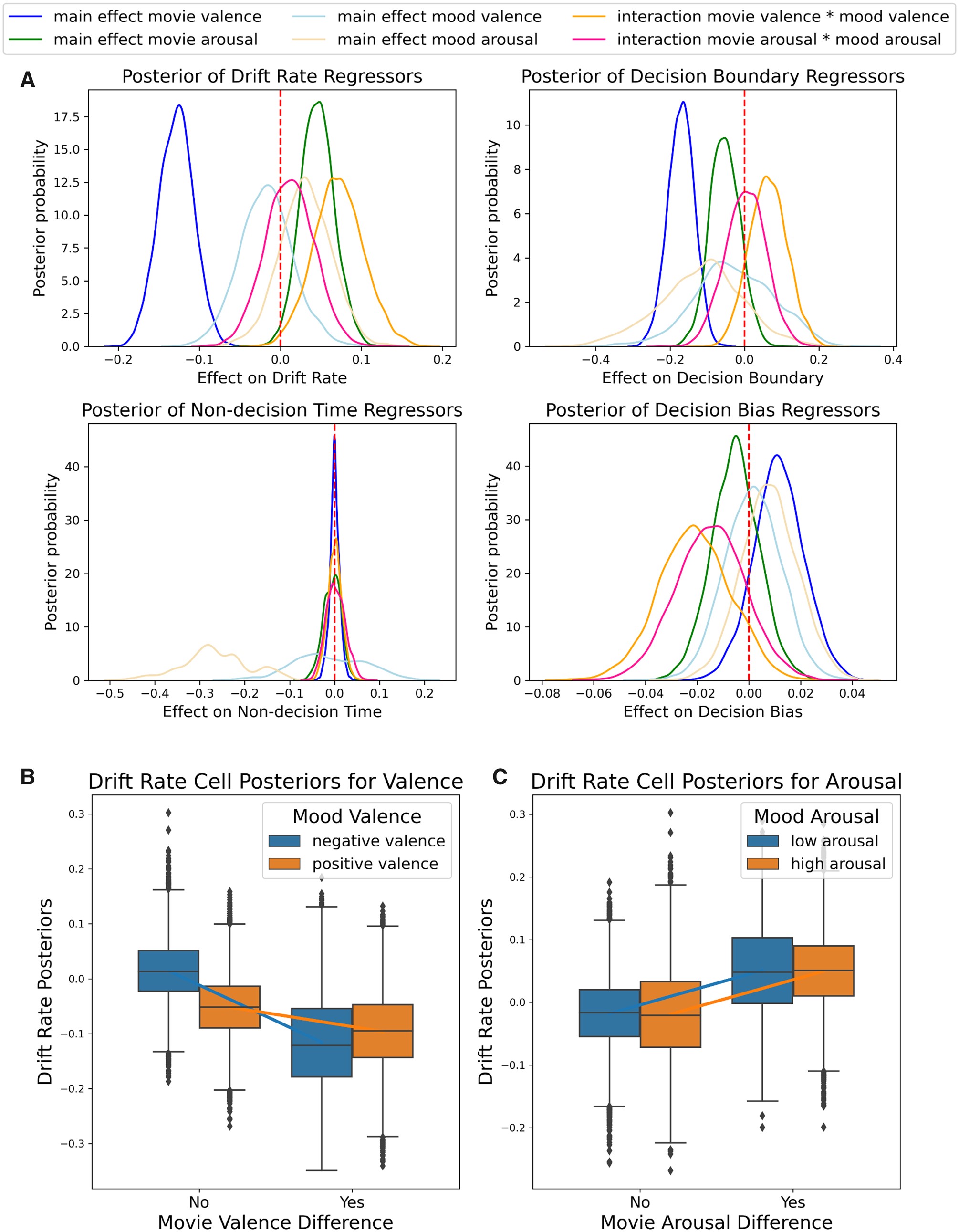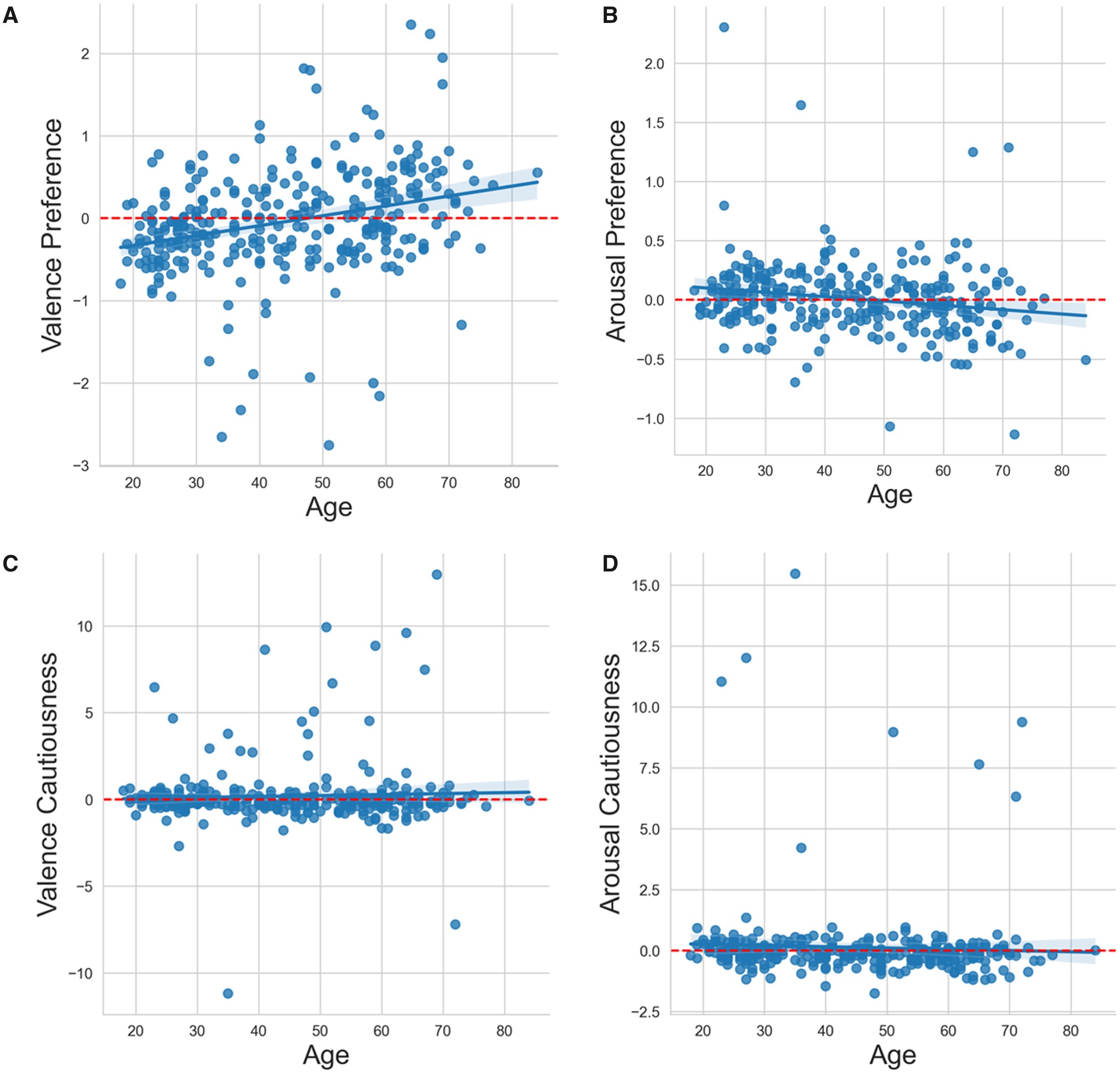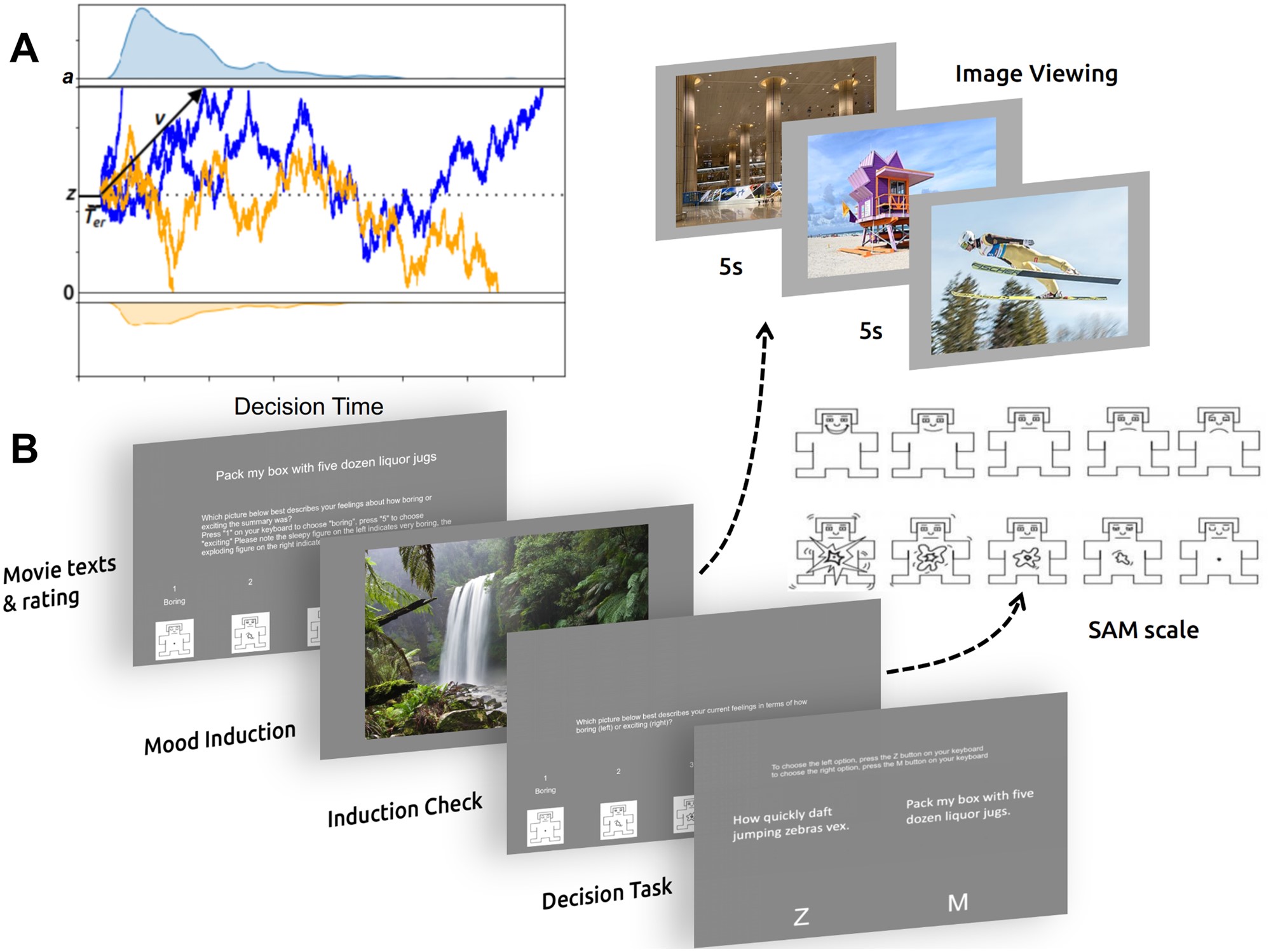Pub at JoC
Thrilled to announce that our new publication Computationally modeling mood management theory: a drift-diffusion model of people’s preferential choice for valence and arousal in media is out at Journal Of Commmunication! 🎉🎉🎉🥳🥳🥳
Across three behavioral experiments with a total of more than 500 participants (including one US population representative dataset), we found that people prefer negative valences and high arousal movies.
Interestingly, people in negative mood tend to amplify this negativity preference rather than mitigate this negativity preference as predicted by mood management theory.

In addition, we found that younger adults has an stronger preference for negative valence and high arousal movies than older adults.

Finally, we discovered an novel movie selection mechanism, where people tend to be less cautious in making movie choices when options have a large difference in valence and arousal.
We designed a novel movie decision task combined with a computational modeling method (the drift diffusion model) using the HDDM Python package. This formal modeling method helps us to detect movie preference and reveal the movie cautiousness mechanism.

For detailed information, please check the article.
The press release can be found here.
I am really proud of working on this wonderful project and being part of our excellent team! This research is impossible without my brilliant collaborators Dr. Richard Huskey, Dr. Eden Allison, and Ezgi Ulusoy. 😀
I would like to give special thanks to our advisors Dr. Richard Huskey and Dr. Eden Allison for their extraordinary advises, comments, suggestions, support, and leadership!
Citation:
Gong, X., Huskey, R., Eden, A., & Ulusoy, E. (2023). Computationally modeling mood management theory: a drift-diffusion model of people’s preferential choice for valence and arousal in media. Journal of Communication, jqad020.